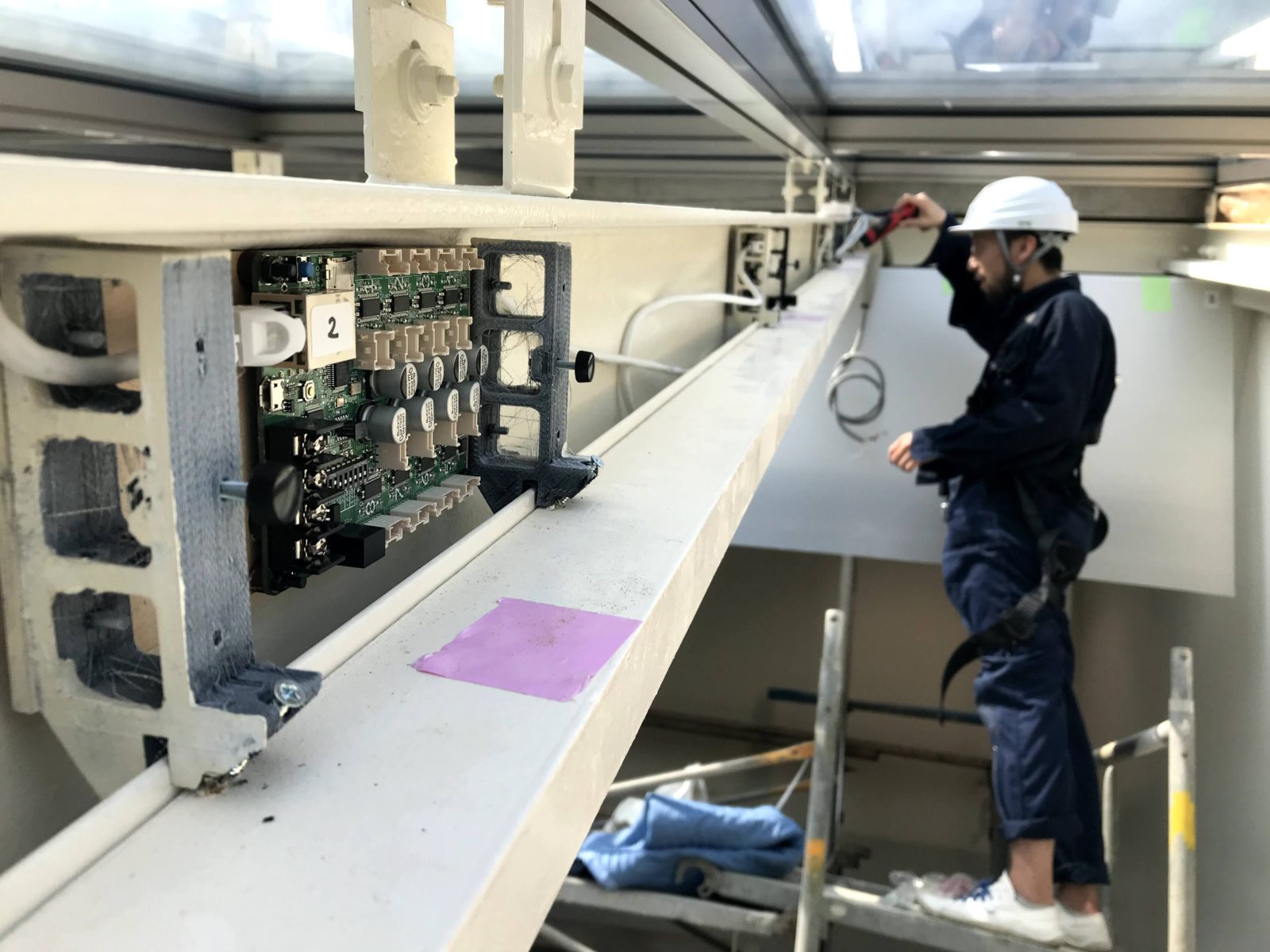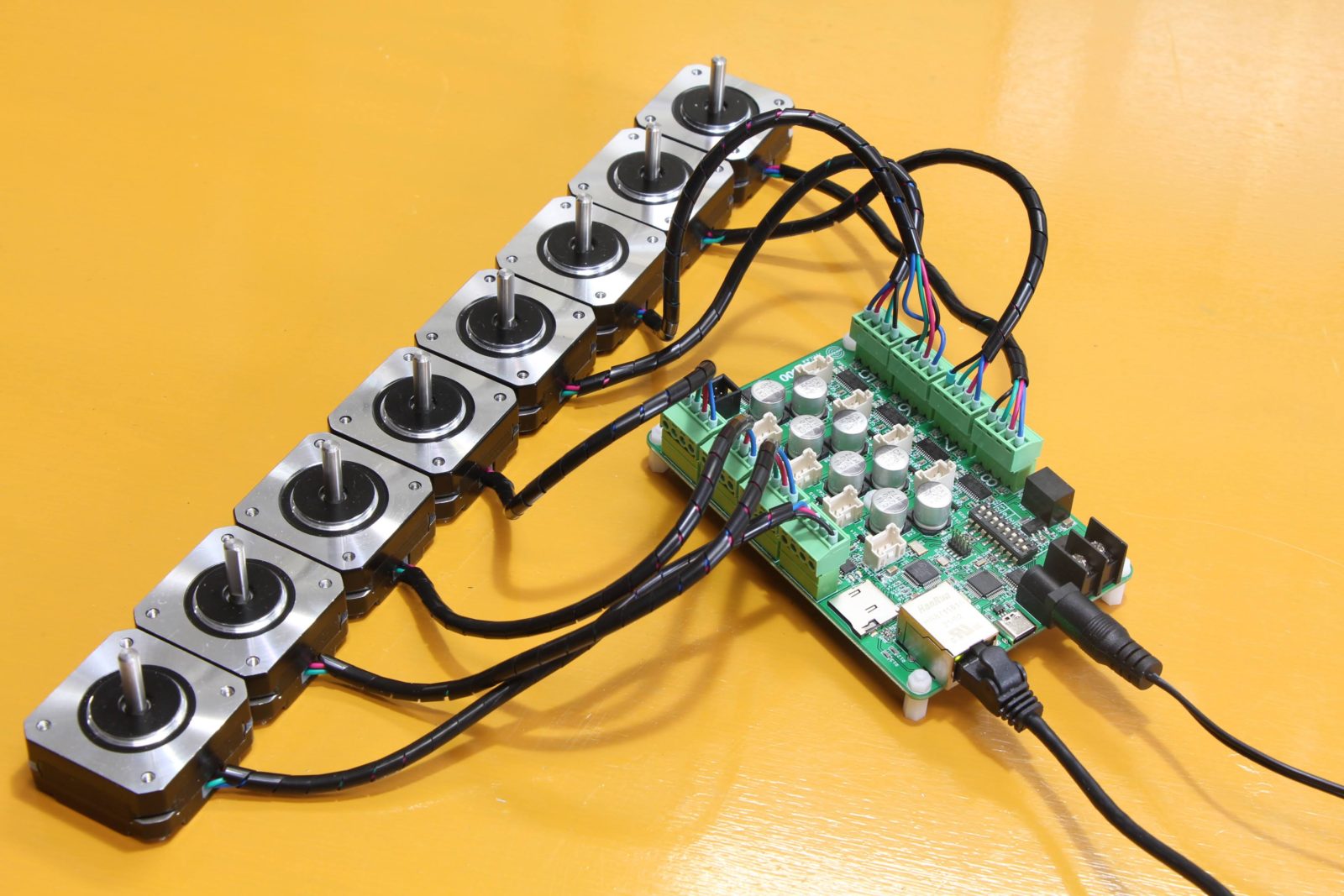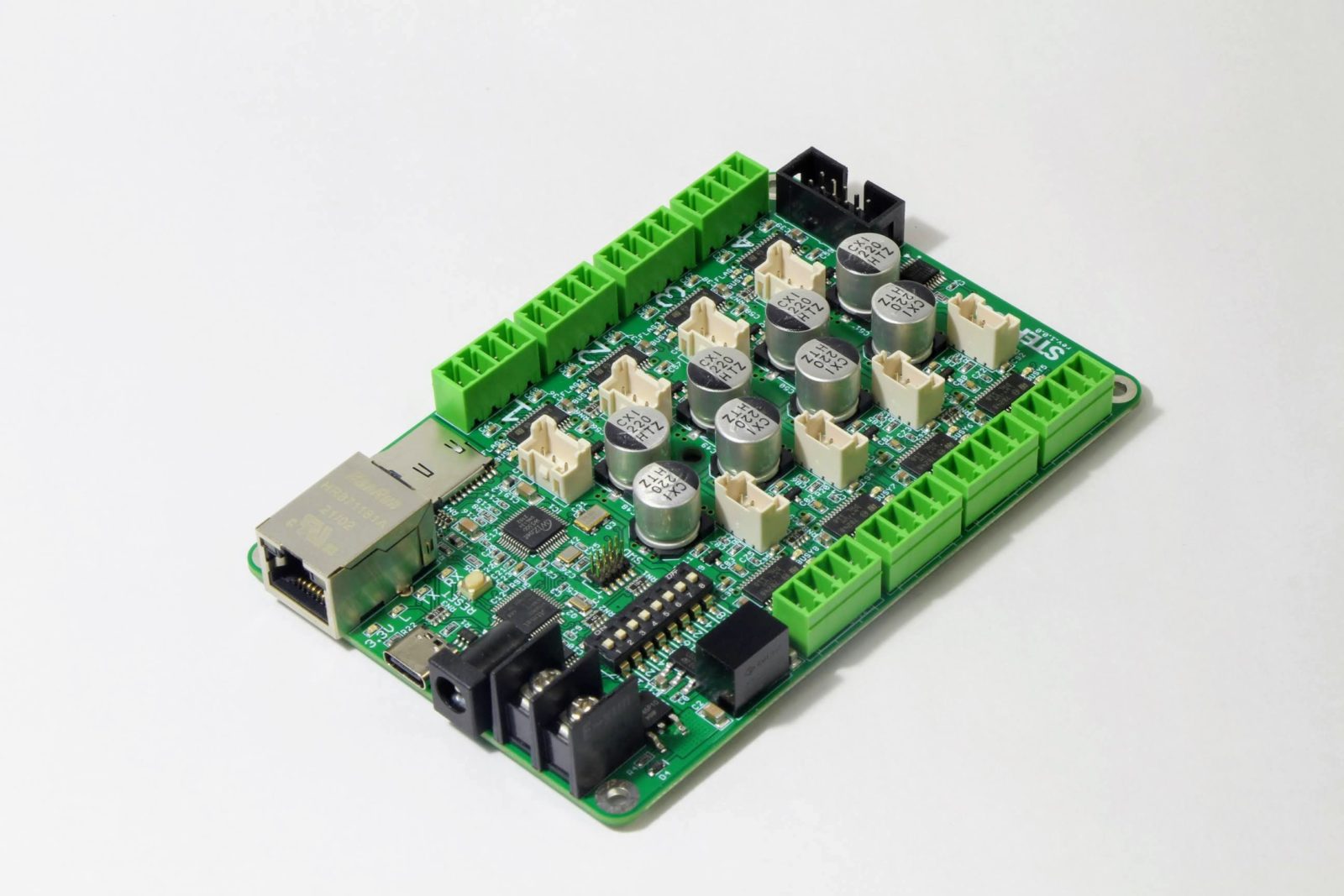
A 8-axis stepper motor driver for creative coders
STEP800 is a stepper motor driver board capable of controlling up to 8 axes with Open Sound Control (OSC) protocol which easily controlled by creative coding environments such as openFrameworks, Processing, Max, Unity, and Touch Designer. STEP800 is Arduino compatible hardware /software so open to write new firmware.
Since a single STEP800 can control up to 8 motors , it has been used in many real projects that require control of numerous motors.
There are many similarities between STEP800 and its bigger brother STEP400. For more information on the differences between them, see this Update.
Born From The Needs Of Real Projects
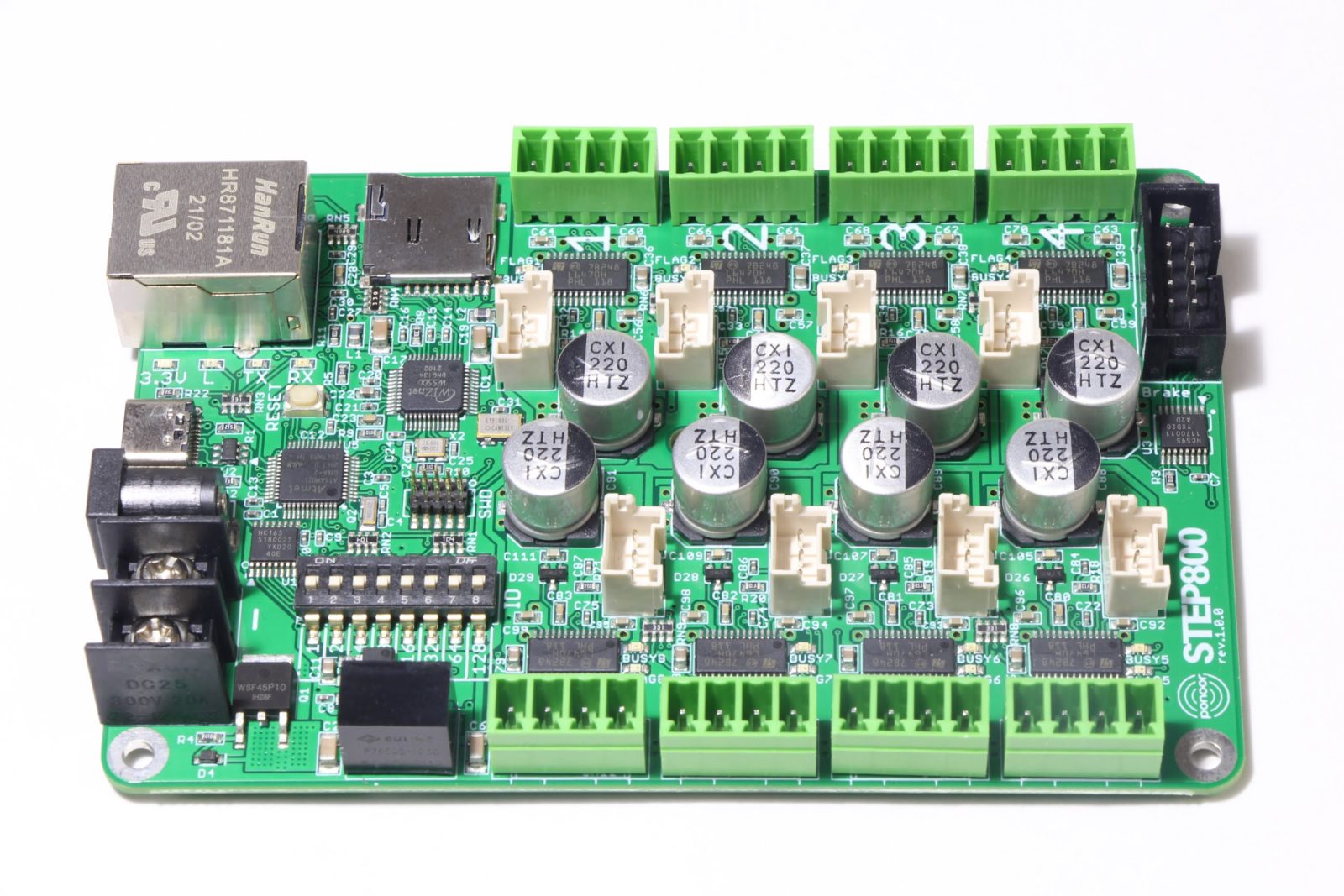
STEP800 comes out of a number of art/design projects we have done with stepper motors. STEP800 were created for our own purpose and have been used, tested and validated specially focused on;
- Receives commands from the master PC and changes motor motions in real time.
- Control many motors from a single PC.
- Verify various ways to move motors and make quick prototypes.
STEP800 uses the simple and easy-to-use OSC protocol, rather than industrial Ethernet protocols which lacks compatibility with general network devices as well as open specification. Open Sound Control (OSC) is widely used in the field of electronic music and new media art, and perfect for controlling from creative coding environments.
Precise Control
Accuracy
Stepper motors divide 1 round to 200steps (some are 400steps), and the STEP-series can divide 1 step to 1/128 microsteps. So the STEP-series can handle the motor position with 25600step resolution for 1 round, means 0.014 degree for 1 step.
Quietness
Since the STEP series has a fine control step, the rotation is very quiet and smooth. Especially in the low speed range, the torque is high and the motor running so quietly that it is almost inaudible.
Fully Synchronized Motion
Since all motor drivers' motions are synchronized within the board, there is no deviation in motions between motors even after long hours of continuous rotation. In addition, since a highly stable crystal oscillator is used to generate the synchronized clock, there are very few fluctuations in rotation, and motion does not deviate even between boards.
Scalable
Since the STEP series is controlled via Ethernet, it can be easily scaled up to a system that controls a large number of motors via an Ethernet hub.
STEP800 in action
Documents
Please refer to this Github repository for firmware, configuration tools, and hardware design files.
Specifications
| Applicable motor | Bi-polar stepper motor |
| Axes | 8 |
| Supply voltage | 9V-32V |
| Absolute maximum rating supply voltage | 36V |
| Maximum phase current | 2A/phase |
| PCB dimension | 122mm x 80mm, t=19mm (Including protrusions) |
| Weight | Approx. 80g |
| Apparatus | 4pin connector for a motor x8 |
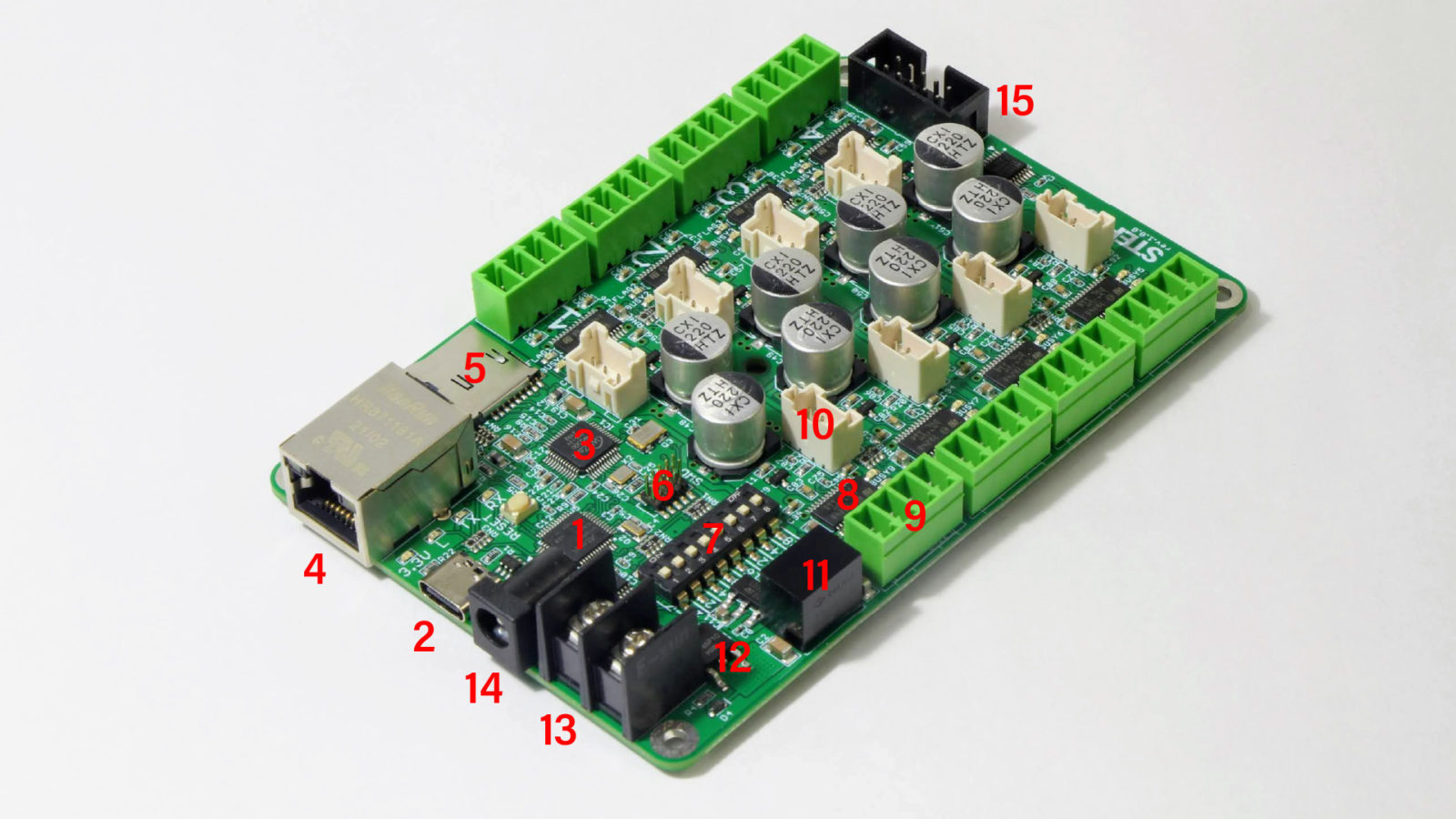
| Number | Description |
| 1 | MCU, Microchip ATSAMD21G18A |
| 2 | USB type-C for the USB connection of the MCU and logic power supply. |
| 3 | Ethernet controller Wiznet W5500 |
| 4 | RJ45 connector with magnetics for Ethernet connection. |
| 5 | microSD card slot. A JSON configuratin file can be loaded from here. |
| 6 | SWD connector to program SAMD chip. |
| 7 | DIP switch to set ID. |
| 8 | Stepper motor driver chip STMicroelectronics L6470 |
| 9 | 3.81mm pitch Euro style pluggable terminal block for bi-polar stepper motor. |
| 10 | HOME sensor or switch input with 5V power output. JST XA (B03B-XASK-1) |
| 11 | DC-DC converter CUI P78E05-1000 |
| 12 | P-MOSFET for reverse polarity protection. |
| 13 | Power input screw terminal, 3mm screw. Input voltage range : 9-32V |
| 14 | DC jack, 5.5mm/2.1mm, center positive. Connected in parallel with #13 |
| 15 | A box header for the add-on brake board |
